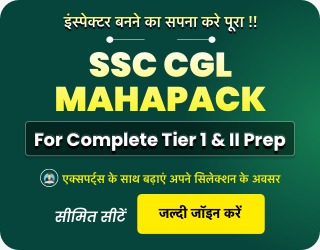Table of Contents
Candidates who are preparing for the SSC CGL exam must go through the SSC CGL Tier 2 Syllabus 2024 and the latest exam pattern before they begin their preparations. Knowing the syllabus is an essential step to boost your preparation. The SSC CGL 2024 Exam for Tier 2 is scheduled from 18th to 20th January 2025, and the candidates must start preparing for the final examination with the syllabus and exam pattern. For the convenience of the candidates, we have also shared the SSC CGL 2024 Syllabus PDF here.
SSC CGL Tier 2 Syllabus 2024
The SSC CGL Tier 2 Syllabus 2024 generally includes three papers, however, this year, the Paper 3 has been omitted as there is no vacancies for the Assistant Audit Officer. The candidates will have to appear for two papers where these papers are further divided into modules for the convenience of the candidates. Both tiers are conducted online, with the Tier I exam serving as a qualifying test, while the final selection is based on performance in the Tier II exam.
SSC CGL Tier 2 Exam Pattern 2024
Along with the SSC CGL Tier 2 Syllabus 2024, it is important for the candidates to get familiar with the exam pattern. Paper 1 consists of three sections in which questions are- Mathematical Abilities, Reasoning, General Intelligence, and General Awareness. Along with these, questions from the Computer Knowledge Test and one Data Entry Speed Test are also there. Paper 2 focuses on Statistics, with 100 questions totaling 200 marks and a duration of 2 hours.
| SSC CGL Tier 2 Paper 1 Exam Pattern [Compulsory] |
||||
| Sections | Module | Subject | No. of Questions | Marks |
| Section I | Module-I | Mathematical Abilities | 30 | 60*3 = 180 |
| Module-II | Reasoning and General Intelligence | 30 | ||
| Section II | Module-I | English Language and Comprehension | 45 | 70*3 = 210 |
| Module-II | General Awareness | 25 | ||
| Section III | Module-I | Computer Knowledge Test | 20 | 20*3 = 60 |
| Module-II | Data Entry Speed Test | One Data Entry Task | ||
| SSC CGL Tier 2 Paper 2 Exam Pattern [Optional] | ||||
| Paper | Section | No. of question | Maximum Marks | Duration |
| Paper II | Statistics | 100 | 200 | 2 hours |
SSC CGL Syllabus 2024 for Tier 2
SSC CGL Tier 2 Syllabus 2024 includes three papers-
- Paper I (Compulsory for all posts),
- Paper II for candidates who apply for the posts of Junior Statistical Officer (JSO) in the Ministry of Statistics and Programme Implementation.
The candidates who are going to appear in the Tier 2 examination, can go through the detailed SSC CGL Tier 2 Syllabus 2024 from the table given below.
| SSC CGL Tier 2 Syllabus 2024 | |
|---|---|
| Module/Session | Subject/Topic |
| Module-1, Session-1, Paper-1
Mathematical Abilities |
Computation of whole numbers, Decimals, Fractions, Relationships between numbers, Percentage, Ratio & Proportion, Square roots, Averages, Interest, Profit and Loss, Discount, Partnership Business, Mixture and Alligation, Time and distance, Time & Work, Basic algebraic identities of School Algebra & Elementary surds, Graphs of Linear Equations, Triangle and its various kinds of centres, Congruence and similarity of triangles, Circle and its chords, tangents, angles subtended by chords of a circle, common tangents to two or more circles, Triangle, Quadrilaterals, Regular Polygons, Right Prism, Right Circular Cone, Right Circular Cylinder, Sphere, Hemispheres, Rectangular Parallelepiped, Regular Right Pyramid with triangular or square base, Trigonometric ratio, Degree and Radian Measures, Standard Identities, Complementary angles, Mensuration, Heights and Distances, Histogram, Frequency polygon, Bar diagram, Pie chart |
| Module-2, Section-1, Paper-1
Reasoning and General Intelligence |
Reasoning and General Intelligence Syllabus of SSC CGL: Questions of both verbal and non-verbal types, Semantic Analogy, Symbolic operations, Symbolic/Number Analogy, Trends, Figural Analogy, Space Orientation, Semantic Classification, Venn Diagrams, Symbolic/ Number Classification, Drawing inferences, Figural Classification, Punched hole/ pattern-folding & unfolding, Semantic Series, Figural Patternfolding and completion, Number Series, Embedded figures, Figural Series, Critical Thinking, Problem-Solving, Emotional Intelligence, Word Building, Social Intelligence, Coding and de-coding, Numerical operations |
| Module-1, Section-2, Paper-1
English Language And Comprehension |
English Language And Comprehension Syllabus: Spot the error, Fill in the blanks, Synonyms, Antonyms, Spelling/ detecting misspelled words, Idioms & phrases, One-word substitution, Improvement of sentences, Active/ passive voice of verbs, Conversion into Direct/Indirect narration, Shuffling of sentence parts, Shuffling of sentences in a passage, Cloze passage, Comprehension passage |
| Module-2, Section-2, Paper-1
General Awareness |
General Awareness Syllabus: India and its neighbouring countries especially about History, Culture, Geography, Economic Scene, General Policy & Scientific Research, Science, Current Affairs, Books and Authors, Sports, Important Schemes, Important Days, Portfolio, People in News |
| Module-1, Section-3, Paper-1
Computer Proficiency |
Computer Proficiency Syllabus: Computer Basics: Organization of a computer, Central Processing Unit (CPU), Input/ Output devices, computer memory, memory organization, backup devices, PORTs, Windows Explorer. Keyboard shortcuts. Software: Windows Operating system including basics of Microsoft Office like MS Word, MS Excel, and PowerPoint, etc. Working with the Internet and e-mails: Web Browsing and searching, Downloading and uploading, Managing an E-mail Account, e-banking The basics of networking and cyber security include networking devices and protocols, Network and information security threats (like hacking, viruses, worms, Trojans, etc.), and preventive measures. |
| Paper II
Statistics |
Collection, Classification, and Presentation of Statistical Data –Primary and Secondary data, collection methods; data tabulation; Graphs and charts; Frequency distributions; and diagram presentation of frequency distributions. Measures of Central Tendency – Common measures of central tendency – mean median and mode; Partition values- quartiles, deciles, percentiles. Measures of Dispersion – Common measures of dispersion are range, quartile deviations, mean deviation, and standard deviation, as well as measures of relative dispersion. Moments, Skewness, and Kurtosis – This section covers the different types of moments and their relationship, the meaning of skewness and kurtosis, and the different measures of skewness and kurtosis. Correlation and Regression – Scatter diagram; simple correlation coefficient; simple regression lines; Spearman’s rank correlation; Measures of association of attributes; Multiple regression; Multiple and partial correlations (For three variables only). Probability Theory – Meaning of probability; Different definitions of probability; Conditional probability; Compound probability; Independent events; Bayes‟ theorem. Random Variable and Probability Distributions – Random variables; probability functions; expectation and Variance of a random variable; higher moments of a random variable; binomial, Poisson, Normal, and Exponential distributions; joint distribution of two random variables (discrete). Sampling Theory – Concept of population and sample; Parameter and statistic, Sampling and non-sampling errors; Probability and nonprobability sampling techniques(simple random sampling, stratified sampling, multistage sampling, multiphase sampling, cluster sampling, systematic sampling, purposive sampling, convenience sampling and quota sampling); Sampling distribution(statement only); Sample size decisions. Statistical Inference – Point estimation and interval estimation, Properties of a good estimator, Methods of estimation (Moments method, Maximum likelihood method, Least squares method), Testing of hypothesis, Basic concept of testing, Small sample and large sample tests, Tests on Z, Chi-square, and F statistic, Confidence intervals. Analysis of Variance – Analysis of one-way classified data and two-way classified data. Time Series Analysis – Components of time series, Determination of trend component by different methods, Measurement of seasonal variation by different methods. Index Numbers – Meaning of Index Numbers, Problems in the Construction of Index Numbers, Types of Index Numbers, Different Formulae, Base Shifting and Splicing of Index Numbers, Cost of Living Index Numbers, and Uses of Index Numbers. |
SSC CGL Books
Candidates need to follow a proper and single booklist to prepare for SSC CGL 2024. There are plenty of books available in the market however, candidates are advised to stick to one single resource and not to keep changing their resources. To know more about SSC CGL Books visit here.
SSC CGL Tier 2 Syllabus 2024 PDF
Candidates can download and keep the SSC CGL Tier 2 Syllabus 2024 PDF with their study material. This PDF will help candidates memorize the important topics to be covered and how to avoid topics not in the syllabus. Click on the link below to download the Syllabus PDF.

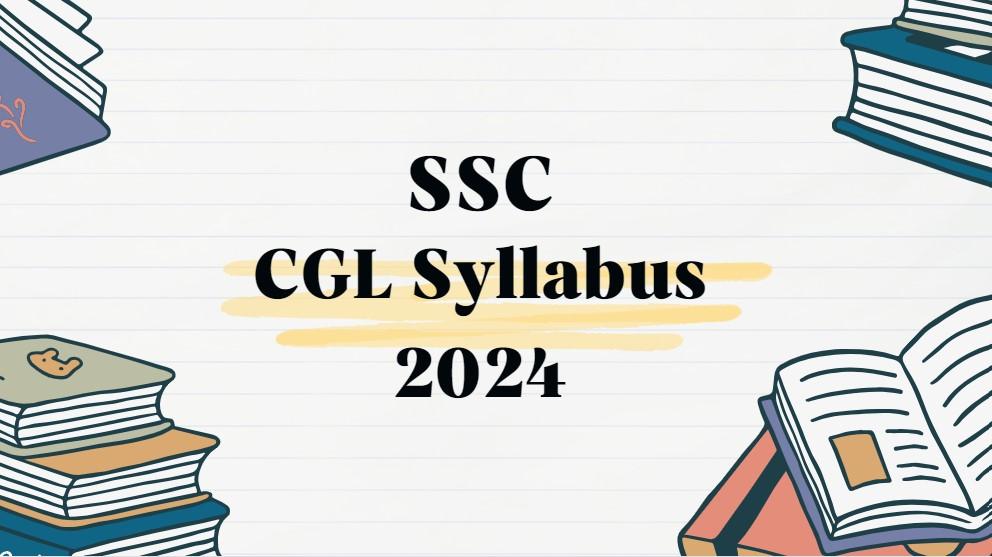
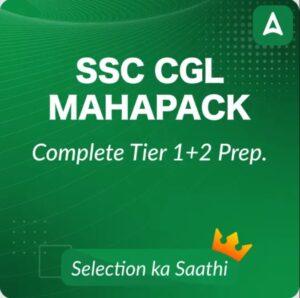

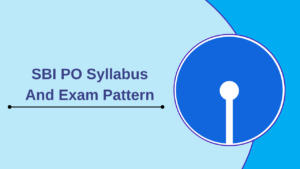 SBI PO Syllabus 2025 For Mains Exams, Do...
SBI PO Syllabus 2025 For Mains Exams, Do...
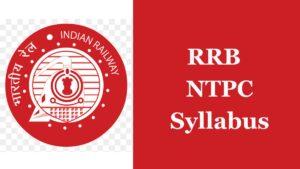 RRB NTPC Syllabus 2025, Check CBT 1, 2 E...
RRB NTPC Syllabus 2025, Check CBT 1, 2 E...
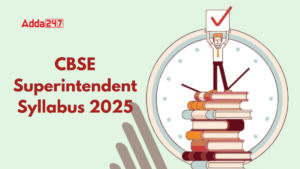 CBSE Superintendent Syllabus 2025 (Tier ...
CBSE Superintendent Syllabus 2025 (Tier ...



